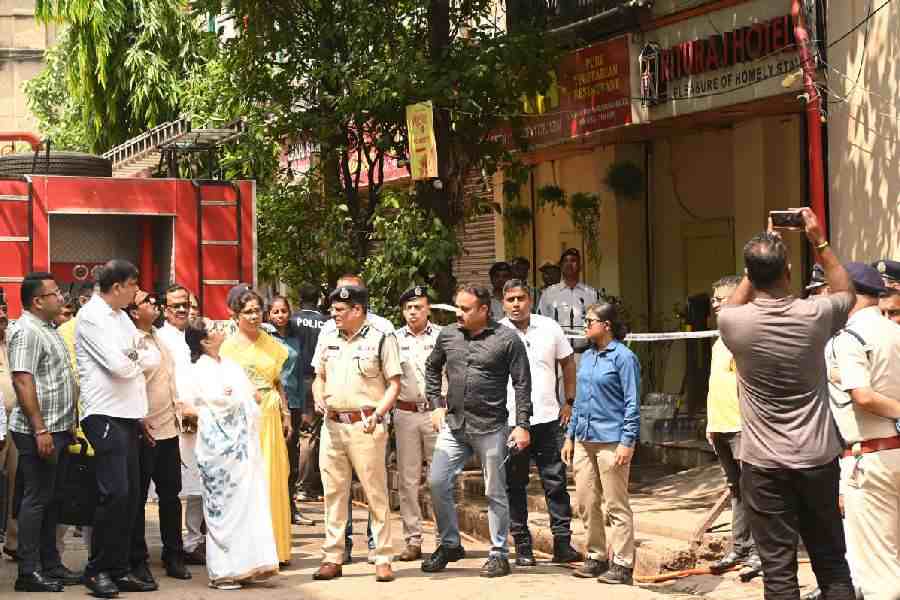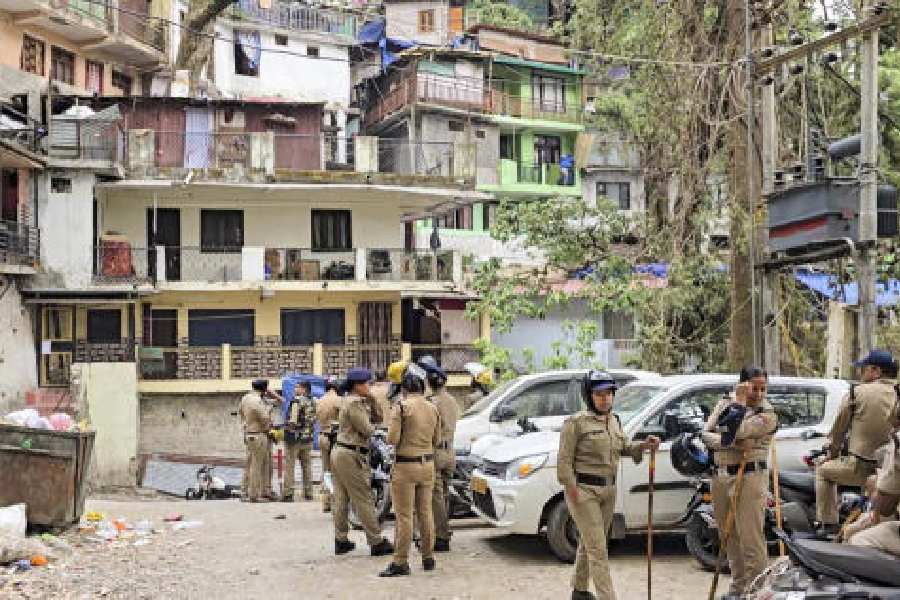Move over tear gas grenades and rubber pellets. The art of controlling protesting crowds is going hi-tech. Some of the novel arms being developed resemble jazzy weapons straight out of a Hollywood science fiction flick.
From blinding laser guns to deafening sound blasters, from skin-roasting microwave beams to chilli-laced chemical sprays, military scientists globally are experimenting with a dazzling range of novel weapon technologies that are less lethal in nature. Most of them belong to a class called directed energy weapons as they work by transferring highly focussed energy to a target that needs to be deterred or dispersed. These weapons, which are at the cutting edge of crowd control, are in various stages of development with some of them having already been tested on limited scales.
Closer home, controversies surrounding the use of pellet guns that resulted in more than 100 cases of severe eye injuries recently in Kashmir have forced Union home minister Rajnath Singh to promise to look for alternative non-lethal munitions. Though it was used in India as late as 2010, pellet guns have been around for a while. Each cartridge fires several hundred pellets which can get lodged in the soft tissues of the body, such as the eye.
Different laboratories under the Defence Research and Development Organisation (DRDO) in India too are developing some non-lethal weapons that may be put to use by police and paramilitary forces in low intensity combats and for crowd control. What is not yet known, however, is their effectiveness or lethality. Among these weapons are a spray that spits out a chemical compound extracted from the deadly Naga chilli Bhut Jolokia - said to be the hottest pepper in the world - created by the Tezpur-based Defence Research Laboratory and laser dazzlers that can impair vision momentarily developed by the New Delhi-based DRDO lab, Laser Science and Technology Centre.
All over the world, the increasing presence of electronic media that beam live visuals from conflict zones and venues of civilian protests since the beginning of the 1990s prompted states to look for alternatives to the use of lethal force, particularly in dealing with civilians. There are other reasons, too.
"Historically, evolving technologies made it possible to have more effective weapons which are deterring and at the same time capable of protecting human lives," says Ajey Lele, senior fellow at the think tank, Institute of Defence Studies and Analyses, New Delhi. These newer technologies are designed to make life for protesters physically uncomfortable so that they voluntarily flee the scene.
Experts project that the global non-lethal weapons market is currently growing at a rate of 8.2 per cent per year and is estimated to reach US$8.37 billion by 2020. The surge in demand stems mainly from increasing incidents of political disputes and civilian unrest, along with increasing militarisation of law enforcement agencies globally.
Even though their developers claim that these weaponry systems are largely safe, there have been reports of some serious injuries when they were used on people in an experimental manner. However, much of their harmful impact is yet to be known as their deployment is still very limited.
Softer to stifle
Non-lethal methods used to deter unruly masses
.jpg)
Access denial system
A controversial non-lethal weapon, Access Denial System or ADS, shoots an invisible beam of energy that creates a burning sensation, forcing people to flee. It can raise the temperature of the outer layer of skin up to 130°C. It is also called invisible pain rays.
Critics say it is technically capable of producing burns of the second and third degree on as much as 50 per cent of the body surface. Incidentally, second and third-degree burns covering 20 per cent of the body surface are potentially life-threatening.
ADS was first tested by the US military in Afghanistan in 2010 but later recalled. It is being developed further.
.jpg)
Laser dazzlers
This non-lethal weapon is capable of shooting dazzling laser beams that can temporarily blind those in their path. The Personal Halting and Stimulation Response (PHaSR) rifle - as it is called - uses two laser beams one after another. The first beam temporarily impairs aggressors by dazzling them. The second wavelength causes a repel effect, discouraging advanced aggressors.
In India, DRDO's Laser Science and Technology Centre, in New Delhi, has been developing both hand-held as well as vehicle-mounted versions of laser dazzlers.
.jpg)
Sound blasters
Called Long Range Acoustic Devices, these non-lethal weapons are capable of producing loud, deafening sounds. It was first used to disperse protesters at the G-20 meet in Pittsburgh in 2009. It is generally used in two ways. First as a megaphone that commands agitators to disperse. When they do not, it produces an ear-splitting siren, forcing them to run away. It employs an array of tiny piezoelectric transducers that convert electrical impulses into sound beyond the auditory threshold of the human ear. Critics say it can cause permanent hearing damage.

Chilli sprays
The natural chemical capsaicin, found in pepper and its synthetic copies, is very popular among military scientists as a device of riot control. The Tezpur-based Defence Research Laboratory has recently developed a spray which uses an active chemical that gives "hotness" to Bhut Jolokia, one of the hottest chillies in the world. A powdered form can also be used inside normal hand grenades.
.jpg)
THE WEAPON
The non-lethal pellet gun is actually a 12 bore pump action gun commmonly known as a shotgun. It holds 4 cartridges. It can be reloaded very fast. If a shotgun is used at close range it can become a weapon of mass destruction but it is effective to disperse crowds from 50 to 500 metres
.jpg)
THE AMMO
There are a large number of pellets in a the cartridge of a shotgun. In Kashmir the soldiers are supposed to use shot no.9 charges. These weigh about 30gm and have about 600 pellets, each weighing 0.05gm with a diametre of 1.2192mm
.jpg)
THE WOUND
A single cartridge fired at head or shoulder height can cause extensive damage to the eyes and face. Eyes are particularly vulnerable; once a pellet strikes the eye, it damages it significantly or entirely, and often causes blindness.
Source: Forensic Science and Criminal investigation and trials

.jpg)








